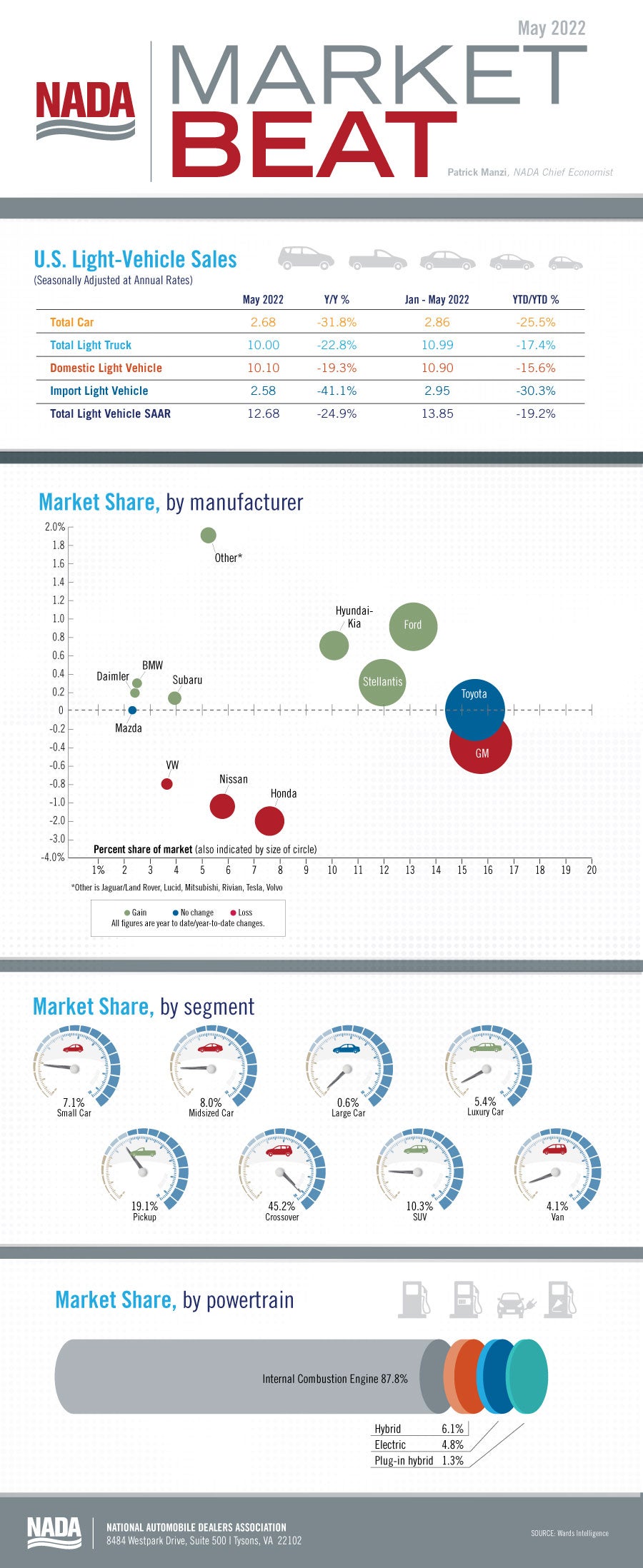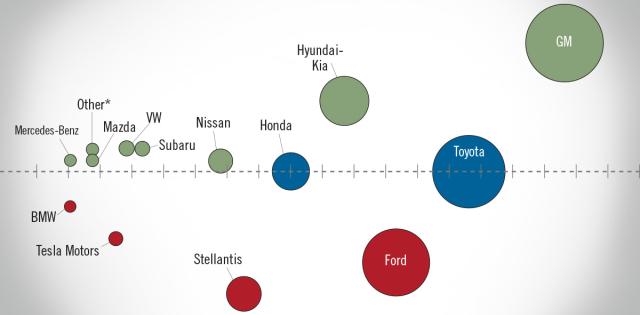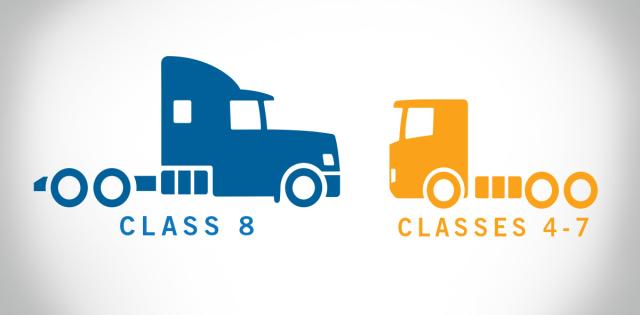New light-vehicle sales fell 12.6% in May 2022 to a SAAR of 12.7 million units, and were down 24.9% from May 2021. May’s SAAR was below expectations of a SAAR in the mid-13 millions, increasing the risk that the Q2 average SAAR won’t improve on the first quarter’s average SAAR of 14.1 million. Still, we expect sales in June 2022 to improve compared with May 2022.
As has been the case since about this time last year and despite high consumer and fleet demand, May 2022’s sales pace was held back by limited new-vehicle inventory across the country. OEMs have also prioritized production of higher-trimmed, and thus more expensive, vehicles. In addition, OEMs cut incentive spending—already at record lows in April—further in May. According to J.D. Power, average incentive spending per unit in May 2022 is expected to be just $965. A richer mix of vehicles, coupled with low incentive spending, has helped push transaction prices higher. J.D. Power expects the average transaction price in May 2022 to total $44,832, a record for the month of May and up 15.7% year-over-year.
High values for consumers’ trade-ins have increased the equity they have in those vehicles and that higher equity has helped keep average new-vehicle monthly payments from increasing as much as new-vehicle transaction prices over the past year. According to J.D. Power, the average monthly payment for a new-vehicle finance contract is expected to hit a record high of $687, up $90 from May 2021. That payment increase represents a year-over-year increase of 15.1%, still below the 15.7% increase year-over-year increase in transaction prices. Looking ahead, we expect that interest rates on new- and used-vehicle finance contracts will increase throughout the rest of the year as the Fed increases the federal funds rate in its effort to combat inflation. The Fed’s two interest rate increases this year, totaling 75 basis points, have already pushed rates higher. J.D. Power says that the average interest rate on a new-vehicle finance contract in May 2022 is expected to be 4.92%, up 62 basis points year-over-year.
Looking ahead, new light-vehicle sales will continue to be limited by OEM production constraints stemming from the ongoing microchip shortage, the Russia/Ukraine war, and other supply chain disruptions. Despite these challenges, we remain confident that 2022 will be a solid year for America’s franchised dealers, given the high demand in the new-vehicle market.
For more stories like this, bookmark www.NADAheadlines.org as a favorite in the browser of your choice and subscribe to our newsletter here:












